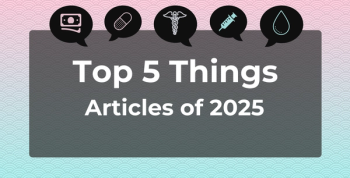
Work-Related Stress Linked to Poor Cardiovascular Health
Key Takeaways
- Work-related stress is a significant psychosocial risk factor for adverse cardiovascular health outcomes, including coronary heart disease.
- The study used the Multi-Ethnic Study of Atherosclerosis to assess the association between work-related stress and cardiovascular health.
A new study has linked work-related stress to poorer cardiovascular health, highlighting the need for workplace wellness programs to reduce the risk of cardiovascular disease.
Those with work-related stress were more likely to have unfavorable
Work-related stress is a psychosocial risk factor resulting in harmful physical and emotional responses due to an imbalance in work requirements and the employee’s resources, needs, or capabilities. About 10% to 40% of employees experience work-related stress and have a subsequently higher risk of adverse cardiovascular disease (CVD) outcomes, like coronary heart disease.
One in 3 US adults has some form of CVD, which
They created their study population using the Multi-Ethnic Study of Atherosclerosis. This community-based cohort study
Baseline data were collected through physical examinations, standardized questionnaires, and fasting laboratory blood tests between July 2000 and August 2002 from 6814 men and women aged 45 to 84 years who were free of clinical CVD or heart failure.1 Participants were recruited from field centers in Baltimore, Maryland; Los Angeles, California; Forsyth County, North Carolina; New York, New York; Chicago, Illinois; and St Paul, Minnesota.
Work-related stress was evaluated using a self-administered questionnaire at baseline. Participants were asked, “Are you experiencing ongoing difficulties with your job or ability to work?” Those who responded yes had work-related stress. They further investigated work-related stress through the follow-up question, “Has this been a problem for 6 months or more?”
Additionally, CVH was assessed using Life’s Simple 7, modifiable health behaviors and factors that
Each metric contributed 0, 1, or 2 points if in the poor, intermediate, or ideal range, respectively, with the aggregated CVH score ranging from 0 to 14 points.1 Based on total scores, participants’ CVH was considered inadequate (0-8 points), average (9-10 points), or optimal (11-14 points).
The study population consisted of 3579 participants, 48% of whom were women; the mean (SD) age was 57 (8) years. Of the study population, 716 (20%) had work-related stress, especially women and those younger than 65.
Also, participants with work-related stress had lower odds of having an average (OR, 0.75; 95% CI, 0.62-0.92) or optimal (OR, 0.73; 95% CI, 0.58-0.92) CVH score. Additionally, compared with having 0 to 1 ideal metrics, those with work-related stress had lower odds of having 2 to 3 (OR, 0.64; 95% CI, 0.46-0.89), 4 to 5 (OR, 0.56; 95% CI, 0.40-0.78), or 6 to 7 (OR, 0.52; 95% CI, 0.32-0.85) ideal metrics.
In particular, participants with work-related stress had lower odds of having the ideal physical activity (OR, 0.70; 95% CI, 0.56-0.86). Although a similar association was observed for the other ideal metrics, the CIs included the null.
The researchers acknowledged their limitations, including social desirability and recall bias. Both may have affected the accuracy of a self-administered diet, physical activity, and smoking questionnaires. Also, because of its cross-sectional design, the study cannot establish a definitive causal link between work-related stress and CVH due to the possibility of reverse causation. However, the researchers expressed confidence in their findings and suggested areas for further research.
“Our findings support the importance of workplace wellness programs designed to manage stress, promote CVH, and reduce the risk of CVD events,” the authors concluded. “Additional research that uses a prospective study design may be needed to establish a definitive causal link between work-related stress and unfavorable CVH.”
References
1. Ogunmoroti O, Osibogun O, Allen NB, et al. Work-related stress is associated with unfavorable cardiovascular health: the multi-ethnic study of atherosclerosis. J Am Heart Assoc. Published online November 6, 2024. doi:10.1161/JAHA.124.035824
2. Tsao CW, Aday AW, Almarzooq ZI, et al. Heart disease and stroke statistics-2023 update: a report from the American Heart Association. Circulation. 2023;147(8):e93-e621. doi:10.1161/CIR.0000000000001123
3. Bild DE, Bluemke DA, Burke GL, et al. Multi-ethnic study of atherosclerosis: objectives and design. Am J Epidemiol. 2002;156(9):871-881. doi:10.1093/aje/kwf1134.
4. Lloyd-Jones DM, Hong Y, Labarthe D, et al. Defining and setting national goals for cardiovascular health promotion and disease reduction: the American Heart Association's strategic Impact Goal through 2020 and beyond. Circulation. 2010;121(4):586-613. doi:10.1161/CIRCULATIONAHA.109.192703
Newsletter
Stay ahead of policy, cost, and value—subscribe to AJMC for expert insights at the intersection of clinical care and health economics.







































